What is Wet Fly Fishing?
(including video below)
Technically, wet fly fishing is any fly fishing carried out using a sunk fly. That definition includes streamers and nymphs as well as more traditional patterns. It would also include sinking as well as floating fly lines.
However, most anglers on both rivers and lakes tend to picture wet fly fishing as using a floating line with flies that come from a recognisable tradition…
This article covers both river and lake wet fly fishing including:
Continuing the "strict versus popular definition" theme... Swinging sunk flies for Atlantic salmon probably sits on the boundary of that traditional picture and specialist schools that have earned their own categories (i.e. nymphing, streamers, pitching squirmy wormies (!!) etc.). So to avoid getting drowned in a tide of Squirmy Hate, let's make a start...
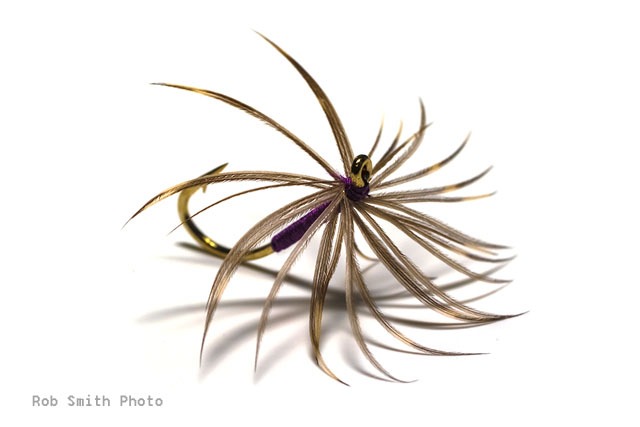
Making Wet Flies Great Again
Along with all the information in this article, you should also know about a free series I created for fans of wet fly fishing...
I wrote a special collection of photo-essays on a theme of "Making Wet Flies Great Again" with the intention of selling the series to a Fly Fishing print magazine publication. They look at how we can avoid having high level wet fly fishing elbowed out of the way by the current fashion for modern nymph fishing - plus stories of wet fly fishing trips and some special tactics with my "Sighter Spider" patterns... But in the interests of understanding if the pieces add something genuinely new and valuable, I thought I'd open them up to you via email:
So I'd love to get your feedback on them - and whether this series of 4 short articles would be a good addition to fly fishing print publications?
As a thank-you (and incentive) for you to check these out, I want to offer an Exclusive Preview of these initial versions - at least while I decide what is best for these stories and tips. I'm not sure how long I'll keep that arrangement open (it partly depends on what and how much feedback I get). If you want to take advantage while they're still available you can register for instant access above.
There's currently no charge for receiving the preview articles - each one is sent out on a weekly interval. I hope that by using simple email delivery, it will make it easier to set up dialogues and get feedback (although you can, of course, cut off that interaction by unsubcsribing at any time).
Now, let's dig into wet fly fishing from the beginning...
What Does a Wet Fly Look Like?
The “industry standard” wet fly comes in two forms – winged and wingless. Traditionally the wing would be made from matched slips of primary flight feather barbs – and is usually swept back at an angle to the body.

Slip Wing, Stiff Collar Hackle Devonshire Wet Fly

Soft Collar-Hackle Wet Flies in the North Country Style
Hackles also tend to be swept back and are slightly more likely to be soft rather than stiff – although there are many traditional wet fly patterns tied with rooster hackles. Where stiff hackles are used, they can either be wrapped as a collar or tied in as a bunch at the throat – and may also be “palmered” (wrapped down the full length of the body).
Body materials for traditional flies tend to be naturally-occurring (though often dyed) such as dubbed fur, natural yarn or feather fibres.
What Do Wet Flies Imitate?
Obviously, if wet flies imitate anything, it is some form of sub-surface prey...
Most often, an insect just before it hatches at the surface – or perhaps a crash-landed and drowned adult fly. By the same token, small/juvenile fish can be well imitated by a standard wet fly. The use of sinking fly lines on lakes and also on rivers has extended the use of wet flies much deeper into the water-column.
In all cases, it is the overall size, profile and impression of life – rather than a rigid photo-realistic copy – that triggers fish to grab wet flies. As with almost everything in fly fishing, this makes your presentation at least as important as the fly pattern itself.
The key thing to recognise is the ability of simple cues that trigger recognition of a “prey image” in the brain of the target fish. Simple, impressionistic and mobile – perhaps with a splash of strong colour thrown in – are the characteristics that make wet flies so effective.
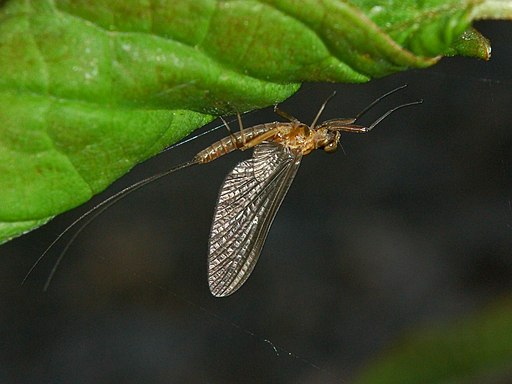
Larval and adult stages can end up under water. Photo: Hectonichus Wikimedia Commons
Basic Downstream Wet Fly Fishing
Normally fished on a floating fly line with two to three flies on the tippet. An overall leader length of 9 to 12 feet is typical.
In fast-flowing water, there can be a significant advantage in being able to control the downstream drift of a fly:
When you are casting upstream – the pace of the current sets the minimum speed of your fly’s drift.
As a result, for less experienced river anglers, fishing downstream feels quite comforting – because everything happens at your own pace...
Fishing downstream, the current keeps your line tight and doesn’t wash it back at you before you are ready for it. Another attractive feature for the beginner river angler is that you often feel the fish pull on your line (rather than needing visual strike indication).
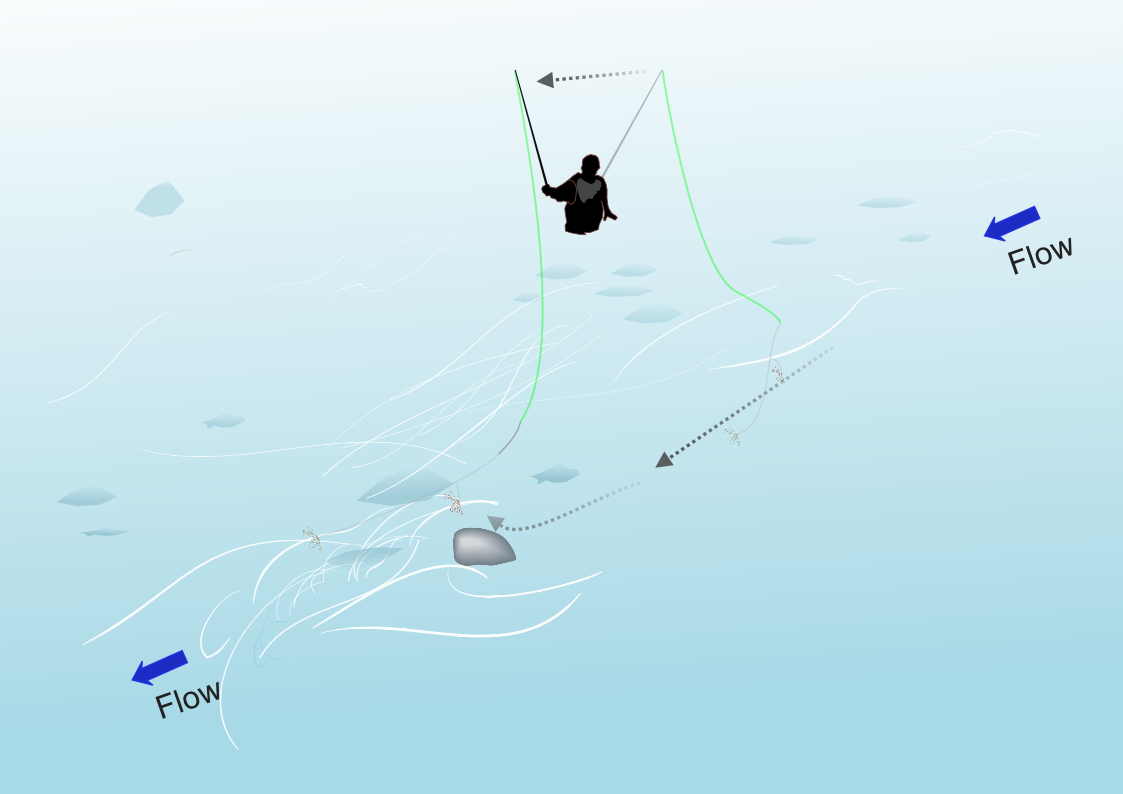
As you build up your skills, you’ll be able to use your line to guide and pause your flies over the most likely fish-holding spots on a river (e.g. in the diagram above). With that said, do be aware that most people fish this technique really badly – and it also comes with some significant pitfalls. Having the current draw the line tight causes several things to happen, including:
To combat these problems, the first thing to do is get in the habit of fishing with a high rod-tip. That creates a softer cushion in your line for a fish trying to turn with the fly. Tracking that rod tip down and across (and lowering it a little as you go) helps to extend the more natural, straight drift of your flies (and lets them get a bit deeper).
Another route to improvement is to experiment with the angle that you cast across the stream. Generally, the closer to perpendicular your downstream cast, the more chance your flies have to sink before coming under tension below you.
Upstream Wet Fly Fishing
Many anglers are quietly terrified of fishing a wet fly upstream. It has a reputation for being impossible – probably because it is rare to feel a fish grab the fly. Ironically, you are much more likely to get a good hook-hold on a fish that has taken your fly upstream of your position. It is probably facing away from you and will not have felt the instant tension on the line that comes with downstream presentations.
Although visual detection of strikes is essential, it is fairly easy once you know what you’re looking for:
The most important thing is to maintain a light tension in the line as your fly or flies drift back towards you.
This is simply a case of raising your rod tip at the same pace as the drifting line. Just don’t forget to pick off and re-cast before you get a large pool of slack line developing in front of you.
With a light tension between your rod tip and your flies, any interruption to the downstream travel of those flies shows up as a twitch or a stopping of the line where it joins the water - or where the fly line joins the leader...
It looks a bit like this:
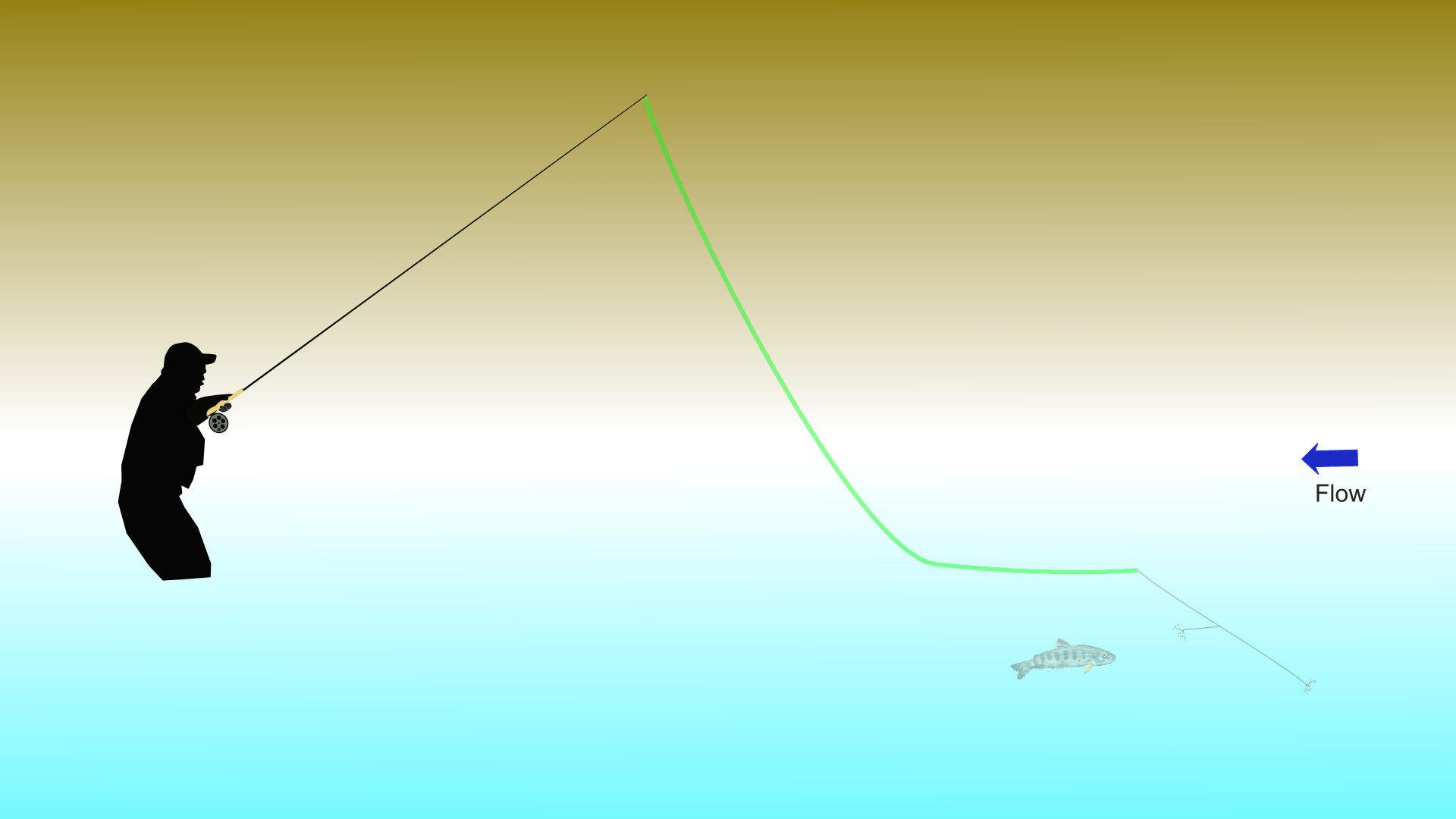
The soft hackled “spider” style of fly is fantastic for this type of fishing – because the profiles are so enticing to fish and also the mobility of those collar hackles create a wonderful impression of life. It seems to be possible to trace the development of these British flies to the traditional flies found in several areas of Continental Europe.
For example, the flies found in the Sesia valley in North Western Italy often bear a striking resemblance to British North Country Spiders:
These flies are fished on long, flexible rods paired with horsehair casting lines and tippets. Watching modern masters of this old pastime is a perfect demonstration of upstream wet fly fishing.
Although “la pesca a mosca valsesiana” (the fly fishing of Sesia Valley) isn’t the only traditional form of wet fly fishing that survives today, it has a particularly passionate group of enthusiasts who work to preserve and promote it.
Here I am fishing with a hand-made horsehair line and "Valsesiana" rod (both made by Andrea Scalvini - one of the passionate advocates of Valsesiana) with traditional soft hackled Italian silk-bodied wet flies :
Whatever tackle you use for upstream wet flies, remember to stay mobile and search lots of water when fishing in this way. Keep your casts short and limit the amount of line that is outside your tip ring (no more than three rod-lengths – and usually somewhere between one and two rod-lengths).
These days, many anglers also include a point (tail) fly that has a small tungsten bead at the head in front of the normal wet fly dressing (or perhaps a bead-head nymph without a hackle). This has several helpful effects. Firstly it will cover some of the deeper layers of water while the dropper fly or flies can fish in the usual “wet fly zone”, closer to the surface.
It also helps to stretch out and maintain that light tension which improves strike indication. Finally, it is also certainly helpful when casting into a head-wind.
Loch/Lough-style Wet Fly Fishing
In Scotland it is a loch – in Ireland it’s a lough; but either way these rocky lakes left behind after the last ice-age are dramatic places to fish. The traditional style is to fish relatively long, flexible fly rods and floating lines.
A team of three (or even four) well-hackled wet flies are cast a short distance in front of the boat – which is allowed to drift downwind; broad-side on to the breeze. To avoid slack line – and to animate the flies, the angler gradually raises the rod tip and strips line with their non-rod hand.
Often the top-dropper fly (known as the “bob” fly) will have floatant applied to it and is drawn through the surface film to create an attractive wake...
Sometimes, being waterlogged or dragged down by the flies behind it, the bob fly pulled along just under the surface.
However, as it gets closer to the boat, the high rod-tip will pull it up through the surface – and it is often “dibbled” (flipped, skipped and wriggled on the surface) for the last moments before picking off to re-cast.
Fish can be attracted to that gentle disturbance and – even if they don’t grab the bob fly itself – being drawn into the area means they often grab one of the other flies on your leader.
Traditionally, the casting distance for loch-style fishing is very short – which allows a lot of control over the bob fly, gives good strike indication and also avoids creating an “exclusion zone” around the front of the boat due to splash-down of fly line.
I found this video by the channel "Totally Awesome Fishing" which shows short-line traditional wet fly fishing on a floating line and using a range of highly typical traditional wet flies:
Modern loch style fishing now frequently involves lines of many (carefully calibrated) different sinking rates. Even the path of the line while it sinks is chosen. Some sink in a shallow “U” shape – which draws the flies down, across and then up through the water when they are retrieved. Others have density compensation (or are constructed as “shooting heads”) to make their retrieve-plane much flatter.
Many of the developments of specialist modern flies (and synthetic materials), lines and retrieve styles developed on English drinking-water reservoirs are making their way into the more traditional venues of Scottish and Irish Loch/Lough fishing. The UK stillwater fly fishing revolution that began in the 1960s and 70s has added a lot of new tactics to traditional branches of lake wet-fly fishing.
At the same time, unique tweaks and developments of those same techniques (often using flies developed from an older tradition) keep a strong sense of tradition alive. This also makes that development process very much a two-way street – with innovations travelling back and forth.
Loch/Lough-Style Wet Flies are designed according to the necessary FUNCTION of those flies.
So, bob flies tend to have stiff, bushy, palmered hackles. Middle droppers and point flies might be more slender and easier to sink – but also have large, soft, mobile “cloak” style collar hackles that pulsate when retrieved.
There are some great examples of those design characteristics found in the flies featured in the video clip above.
Quite often you will feel the fish draw on the line when they grab your fly in this style of fishing. Alternatively you may see the flash of a turning fish below the surface – or perhaps the loop of line from your rod tip begin to draw tight. Both of those are your cue to set the hook. Of course, when a big, wild trout smashes into your bob fly as you dibble it on the surface you’ll not need anyone to tell you to strike.
PG Sight Spiders for Rivers
I’ll have to do a more detailed article about these, but here’s what you need to know for now…

A selection of my favourite "Sight Spiders"
Combining knowledge about the evolution of French Nymphing with wet fly fishing experiences in Japan allowed me to steal some valuable skills about sight fishing. The final piece of the puzzle fell into place when studying Czech nymphing with Jan Siman – where he spoke about fish in pressured rivers.

Jan Šiman
FIPS Mouche World Championships 1990 Gold Medal Winner
Sometimes trout and grayling get spooked by bright sighter braid/mono used to indicate strikes while French and Czech nymphing.
According to Jan and others, grayling in particular began to shy away from standard sighter mono/braid when there were lots of competition anglers practicing on particular sections of river.
One solution was to change the colours of sighters to ones that the fish would tolerate – but it set me thinking “why not move the sighter on to the fly itself?”.
Japanese and French anglers had already created and used sunk flies to detect strikes – whether or not that was coupled with stealth/low-viz casting lines or sighters:
Apart from playing around with some fly patterns, the main contribution I thought I could make was to specifically minimise the “spooking potential” of the casting line, leader and tippet – while relying on special wet flies for strike indication.
Basically just joining two solutions to problems in different parts of the system together. Again, I am sure that has been done before...
but I don’t think anyone has clearly flagged up stealth modification while ALSO shifting the strike detection onto the fly as part of one system.
Another key thing is that you are not casting at sighted fish (as you would in normal sight fishing/stalking). Instead you are fishing to features and then using a sunken fly that you can see to help you detect strikes.
Ajari’s White Jig Kebari
One of the original, and still one of the best, flies for this style is tied by Kazumi Saigo (AKA “Ajari”) in Japan. He uses small jig hooks as they have a nice keel effect that makes the flies swim nicely. As you can see, the white/pearl/UV body, white hackle and hot-orange head all combine to make a really visible fly. Fish absolutely love it too!

Ajari tends to fish this pattern as a single fly – it is unweighted and he religiously keeps all his casting line off the water. As an ex-competitive bass angler and with stacks of compiled data on conditions, catches, methods, he is a phenomenal fisherman.
Multi Fly Option
As well as fishing my patterns (and others like Ajari’s) as a single fly – it is also possible to use sight spiders as part of a team.
The trick is to use one on the top dropper – so that it spends as long as possible close enough to the surface for you to see.
If the white hackle disappears – set the hook and it should be a fish on the top dropper!
If, instead, it jerks to one side or stops/does something else weird – it’s a fish grabbing a fly further down the tippet.
This approach works with French leaders (with the sighter removed), traditional horsehair lines, silk fly lines as well as drab plastic fly lines too. You can apply it on whisky-stained water just as well as on clear-water streams.
If a river becomes too coloured with suspended sediment to use this tactic – then the fish are unlikely to be spooked by a conventional sighter; so you can just use that instead.
Of course it isn’t perfect – and there will be times when the sight spider sinks out of sight (or is just lost in the surface glare). As with any technique, it is about balancing costs and benefits on the day.
Name-checking H. C. Cutcliffe: Devonshire Wet Fly Fishing Legend
Although he is nowhere near as well known as some of his fans (including G.E.M Skues), Henry Charles Cutcliffe knew a thing or two about wet fly fishing. He fished the trout streams of North Devon in the late 1800s and, fortunately for us, wrote a book about his favourite tactics (more on which below)...
One of the most important features of his fishing style was his insistence on using stiff-hackled wet flies in rapid streams. He felt that they stood up to the pressure of the current better - as well as having a much more "glossy" appearance than soft hackles.
Another key element was his summer fishing where Cutcliffe favoured a range of extremely brightly-coloured flies. He also carried drab/natural-coloured flies for a lot of the rest of the season and he fished them in a style that looks surprisingly similar to successful, modern competition anglers. His quick-fire coverage of the water, "working" of the flies and high rod-tip position are all elements that are shared by today's most successful river fly fishers.

A bright "Cutcliffe" pattern - tied in the fingers directly to tippet

A more muted Cutcliffe wet fly
It is also important to note that he didn’t just stick in a single “lane” with his fishing. He was equally adept with a minnow, live beetle, worm or the wet flies he tied in his fingers without the aid of a vise. A true all-round angler (though he didn’t like float fishing with worms much!).
Since discovering his book I’ve had the pleasure of researching more about his life-story and understanding his fishing ideas and approach. That inspired me to produce my own book about his fishing and flies – which also includes and explains his original manuscript as well:
Discover Cutcliffe's genius & order your own copy by Clicking the appropriate Amazon Associates link below:
Naturally, being my book and part of the Amazon Associates program, I'll receive commission from Amazon for any qualifying purchases made using the buttons above - just for full transparency!
Wet Fly Fishing Take-home points
A fishing style with a very long tradition on both still and flowing water, wet flies are far from obsolete. Some key things that will improve your success are given here:
Key Messages:
Can I ask you, if you found something of interest or value in this article, please consider linking to it from your own content or social media posts?
You can also click on the social sharing icons to let your friends know what excellent taste in reading materials you have!
Thank you so much!
Paul

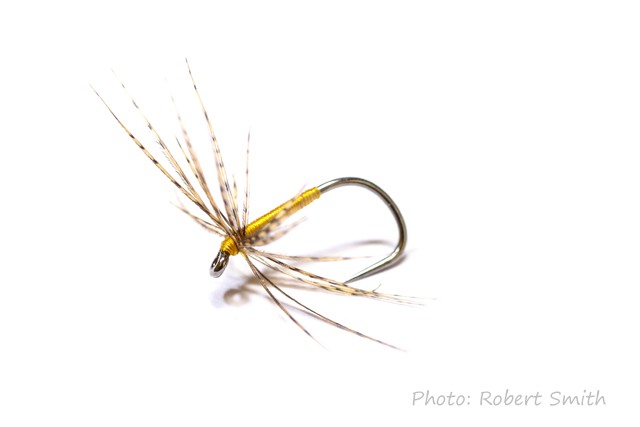


I particularly like the sections on Basic Downstream Wet Fly fishing and the Upstream Wet Fly fishing sections with the diagrams. The diagrams help show how much fly line is actually on the water though a verbal explanation of this with an approximation of feet of line on the water would be very helpful.
Hi Rod, thank you for the feedback. Although it might not be especially helpful it’s still true to say that the approximate feet of line on the water will vary according to need and each situation. All I can say is that the basic guideline is to always make that distance as short as possible (or even eliminate any line on the water if the opportunity presents itself). Although it is beyond the scope of a single article to cover all the different eventualities (or how to think about each of those situation), I do talk about that stuff quite often in my River Perspectives subscription content. If you’ll forgive the blunt pitch, I wanted to make sure you were aware of the option here: https://fishing-discoveries.ck.page/products/pauls-river-perspectives-fly-fishing
Informative and enjoyable reading – thank you for such a useful resource.
This old piece by Sylvester Nemes is well worth a look
https://www.flyfisherman.com/editorial/softhackled-fly/468172
Wonderful stuff Kerry – many thanks.
I’ve enjoyed everything I’ve read by Nemes; so thank you for posting that link to a great resource,
Paul
Nice work Paul, I’ve been really enjoying a bit of a rediscovery of fishing spiders & wets recently, hadn’t fished them for years.
Best wishes
Mike
Cheers Mike – I have a line of yours on one of my “river wet fly rig” reels!
Paul
Fabulous Paul, thank you.
Thank you so much Mel and I’m glad you enjoyed this,
Paul
Hi Paul.. will the links be available again soon? I assume you are moving them over
Hi Mike, yes we are combing both this site and also “Discover Tenkara” to find and update as many links as possible that are currently pointing to resources that are being moved.
It is a painstaking process, so please watch this space as we’ll get it sorted as soon as we possibly can,
Paul
interessante..grazie infinite
Prego Gianni – molto gentile,
Paul
molto interessante ed istruttivo per un neofita.
io uso gli spider e wet flies come mosche secche, una sola in fondo al tippet
grazie
gianni
Molto gentil gianni – grazie mille.
Paul
Really enjoying these clear, concise articles. Enough to move forward without being too wordy that you forget key points.
One question, what do you use for the hackle on your sighting spiders?
Hi Stuart – I tend to use a whiting, white hen cape (as I’ve got one and there’s loads of feathers on it of about the right size ha ha ha).
All the best and thank you for your kind comments.
Paul
Good advice and video nice to watch.
Thank you so much Peter.
Paul
You’re welcome to drop your comments and questions in this section – I’d love to get your feedback.
Nice reading.
Thanks Peter – very kind of you to say.
Paul